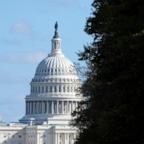Drought in US improves slightly but still a problem for half the country
Heading into November, widespread drought conditions are still a significant concern across the country, with the Northeast currently experiencing some of the worst impacts, according to a U.S. Drought Monitor update released Thursday.
Overall, more than half of the contiguous United States is still grappling with drought. But there are some areas where things are improving slightly. A large swath of the central U.S. saw its drought situation improve, according to the data.
As a result, countrywide drought coverage decreased from 54.08% to 51.89% week over week. Moderate to severe drought conditions expanded in the Northeast, with portions of southern New Jersey now experiencing extreme drought conditions. Recent heavy rain in the Southern Plains brought drought improvements to parts of Texas, Oklahoma and Kansas.

October was one of the driest months on record for the U.S., triggering a significant increase in the area and severity of drought conditions. While the overall drought coverage has decreased slightly, over 87% of the lower 48 states continue to experience abnormally dry conditions, the most extensive coverage area ever recorded by the U.S. Drought Monitor, which began tracking the data in 2000.
Drought is a complex phenomenon influenced by various factors. Among these, extreme heat is strongly linked to human-amplified climate change. More frequent and intense extreme heat events can worsen the effects of drought. Drought risk has increased in the Southwest over the past century, according to the federal government's Fifth National Climate Assessment.
Over the next week, measurable rain is forecast across most of the country, with widespread significant rainfall likely across portions of the Midwest, Plains and Pacific Northwest.
Looking ahead, NOAA's Climate Prediction Center said most of the country will likely experience above-average precipitation in mid-November, particularly in the Midwest, Plains and West. Most of the East Coast and Gulf Coast can expect near-average rainfall during this period. No part of the nation should experience below-average precipitation during this time.
-ABC News meteorologist Dan Peck and ABC News Climate Unit's Matthew Glasser







